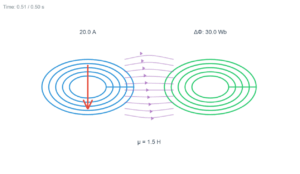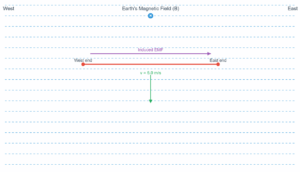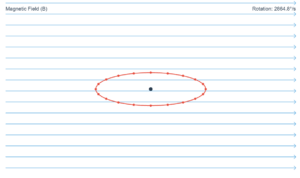Motional EMF Simulation
Interactive Physics Learning Tool - Electromagnetic Induction Visualization
FPS: --
Rod: -- m
Rod: -- m
Rod Motion Status
Rod is stationary at the right edge of the rectangle inside motional emf simulation
Magnetic Field Strength
0.5 T
Magnetic Field (B): Strength of the magnetic field perpendicular to the conductor. Measured in Tesla (T). Higher values increase the induced EMF.
Rod Velocity
1.0 m/s
Velocity (v): Speed at which the conducting rod moves through the magnetic field. Higher velocity increases the rate of flux change and EMF.
Rod Length
1.0 m
Length (l): Length of the conducting rod cutting through magnetic field lines. Longer rods cut through more field lines, increasing EMF.
Induced EMF
0.000
V
Magnetic Flux
0.000
Wb
Induced Current
0.000
A
Power Dissipated
0.000
W
Understanding Motional EMF
What is Motional EMF?
Motional EMF is the electromotive force generated when a conductor moves through a magnetic field. This phenomenon demonstrates Faraday's law of electromagnetic induction in action.
Primary Formula:
\( \varepsilon = B \cdot l \cdot v \)
Where: ε = EMF (Volts), B = Magnetic Field (Tesla), l = Length (meters), v = Velocity (m/s)
The Physics Behind It:
- Faraday's Law: \( \varepsilon = -\frac{d\Phi_B}{dt} \) - EMF equals the negative rate of change of magnetic flux
- Magnetic Flux: \( \Phi_B = B \cdot A \cdot \cos(\theta) \) - The amount of magnetic field passing through an area
- Lenz's Law: The induced current flows in a direction that opposes the change causing it
- Right-Hand Rule: Determines the direction of induced current based on field direction and motion
Real-World Applications:
- Electric Generators: Convert mechanical energy to electrical energy
- Dynamic Microphones: Convert sound waves to electrical signals
- Eddy Current Brakes: Used in trains and roller coasters
- Induction Motors: Convert electrical energy to mechanical motion



